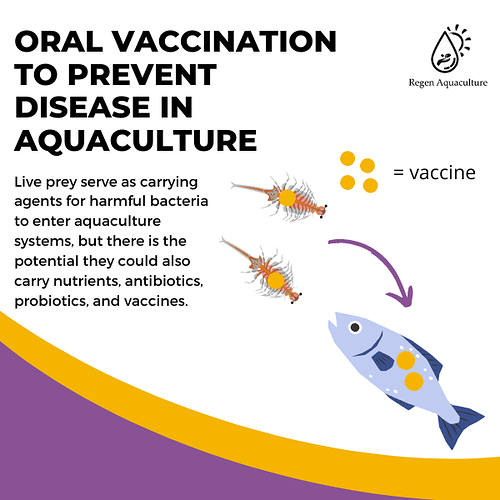![]() Fish oral vaccines have increased in both use and availability in recent years, but their efficacy on a fish’s immune system is under studied. Before reaching the immunological site, gastric acids and enzymes degrade the effectiveness of oral vaccinations.
Fish oral vaccines have increased in both use and availability in recent years, but their efficacy on a fish’s immune system is under studied. Before reaching the immunological site, gastric acids and enzymes degrade the effectiveness of oral vaccinations.
![]() Research Highlights:
Research Highlights:
![]() One attempt at solving the problem of degradation is to encapsulate the antigens in poly-biodegradable nanoparticles, transgenic bacteria, plant systems, and live feeds.
One attempt at solving the problem of degradation is to encapsulate the antigens in poly-biodegradable nanoparticles, transgenic bacteria, plant systems, and live feeds.
![]() Nanotechnology has made it possible to regulate vaccination parameters, target specific cells, and actually lower the antigen dose using chitosan and poly D, L-lactic-co-glycolic acid as vaccine carriers.
Nanotechnology has made it possible to regulate vaccination parameters, target specific cells, and actually lower the antigen dose using chitosan and poly D, L-lactic-co-glycolic acid as vaccine carriers.
![]() Given their small size and non-filter feed system, Artemia salina, a species of brine shrimp, is a viable candidate for being a bio-carrier through bio-encapsulation. Bio-encapsulation envelopes tissues or other biological active substances in a semipermeable membrane to protect the enclosed biological structures from hazardous processes.
Given their small size and non-filter feed system, Artemia salina, a species of brine shrimp, is a viable candidate for being a bio-carrier through bio-encapsulation. Bio-encapsulation envelopes tissues or other biological active substances in a semipermeable membrane to protect the enclosed biological structures from hazardous processes.
![]() In aquaculture, oral vaccination can be delivered either by coating the feed in antigens or through bio-encapsulation. Despite the advantages of orally administering vaccines, there are still limited numbers of licensed oral vaccinations due to the lack of the immune response when compared to injectable vaccines.
In aquaculture, oral vaccination can be delivered either by coating the feed in antigens or through bio-encapsulation. Despite the advantages of orally administering vaccines, there are still limited numbers of licensed oral vaccinations due to the lack of the immune response when compared to injectable vaccines.
![]() Image: The systemic design process of an oral vaccine bio-encapsulated inside brine shrimp.
Image: The systemic design process of an oral vaccine bio-encapsulated inside brine shrimp.
